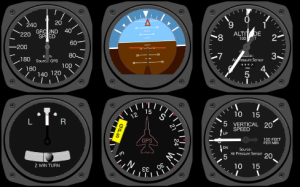 Feedback is one of the most powerful and underused forms of employee engagement and motivation. It is also extremely economical as there is no financial expense in using it and takes very little time.
Feedback is one of the most powerful and underused forms of employee engagement and motivation. It is also extremely economical as there is no financial expense in using it and takes very little time.
Feedback is an essential motivational tool for leaders but also for team members to build team spirit and high performance teams.
Types of Feedback
 Feedback needs to be both positive and negative. Positive feedback reinforces what the person is doing well and builds self-esteem, self-confidence and trust. It can be in the form of praise and recognition.
Feedback needs to be both positive and negative. Positive feedback reinforces what the person is doing well and builds self-esteem, self-confidence and trust. It can be in the form of praise and recognition.
Negative feedback done well promotes continuous improvement and acts as a way of coaching and training employees and team members.
Balancing positive and negative feedback creates an emotional equilibrium. Think of this as a savings account. When you give positive feedback you are making a deposit in the person’s emotional bank account. Negative feedback is like making a withdrawal from the account.
Thus it is important to maintain a balance or preferably to give positive feedback more often. Doing this reinforces good performance, feels good, and improves engagement and team spirit.
How to Give Feedback
 Positive feedback should focus on the behaviour of the person that led to the result. Negative feedback should focus on the result and what needs to be different.
Positive feedback should focus on the behaviour of the person that led to the result. Negative feedback should focus on the result and what needs to be different.
In my last article and video I used the concept of “What If” as a way to give feedback. This approach combines positive feedback with suggestions for improvement and thus does not seem like criticism.
I’ll get into more detail on how to give feedback on future articles and videos so subscribe to my blog and videos.
When to give Feedback
 Feedback on job performance should be continuous and ongoing.
Feedback on job performance should be continuous and ongoing.
Feedback should be given as soon the action deserving feedback has occurred. This makes both positive and negative feedback more powerful as a motivational force.
We see this all the time in sports. When a good jest occurs team members and the coaches are quick to reward or give direction.
The Goals and Obstacles to giving Feedback
 As mentioned earlier feedback is one of the most underused forms of employee motivation, engagement and continuous improvement.
As mentioned earlier feedback is one of the most underused forms of employee motivation, engagement and continuous improvement.
To become more frequent and adept at giving feedback, you need to make this a priority based on your understanding of its importance.
One good practice for leaders is to set up front expectations of job performance with milestones to achieve. When doing follow-up on tasks and projects the leader can identify actions worthy of praise and things that need improvement.
The same is applicable for teams. When teams have a common goal and understand each team member’s role, they can more easily praise each other and keep the team spirit high.
 Think of the feedback a pilot gets continuously from the flight instruments when flying a plane. He knows instantly when the plane is going off course and makes adjustments accordingly. The same theory applies to employees. Your feedback lets people know if they are on track or need to adjust.
Think of the feedback a pilot gets continuously from the flight instruments when flying a plane. He knows instantly when the plane is going off course and makes adjustments accordingly. The same theory applies to employees. Your feedback lets people know if they are on track or need to adjust.
Conclusion
To keep employee engagement and motivation high:
- Establish performance expectations
- Develop the habit of giving feedback
- Balance positive and negative feedback
- Give feedback the right way
- Adjust your feedback for the individual
Stephen Goldberg